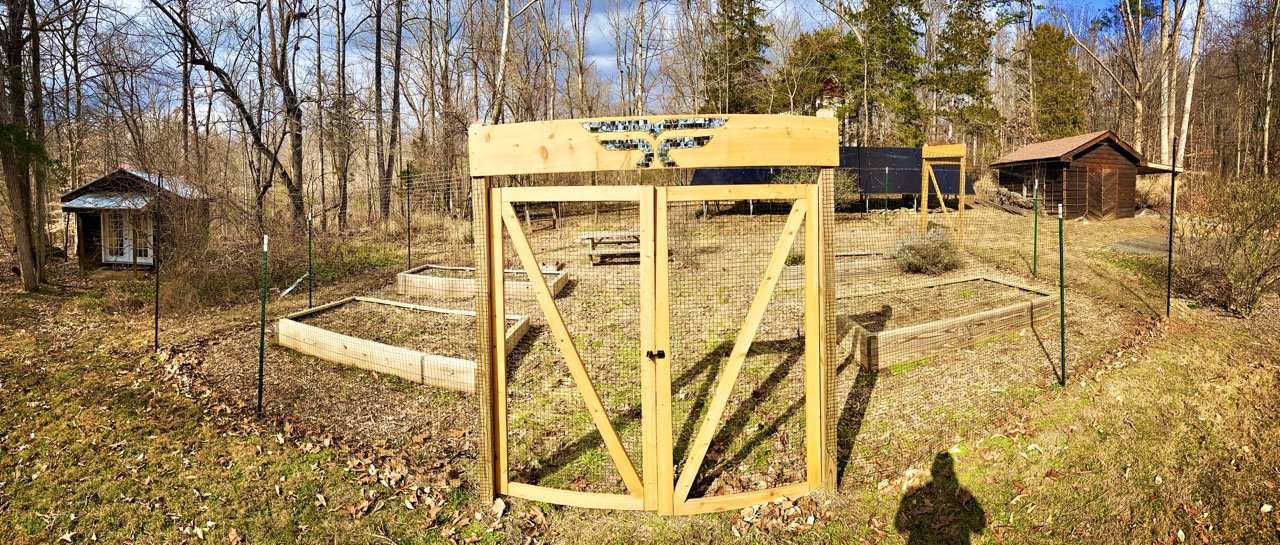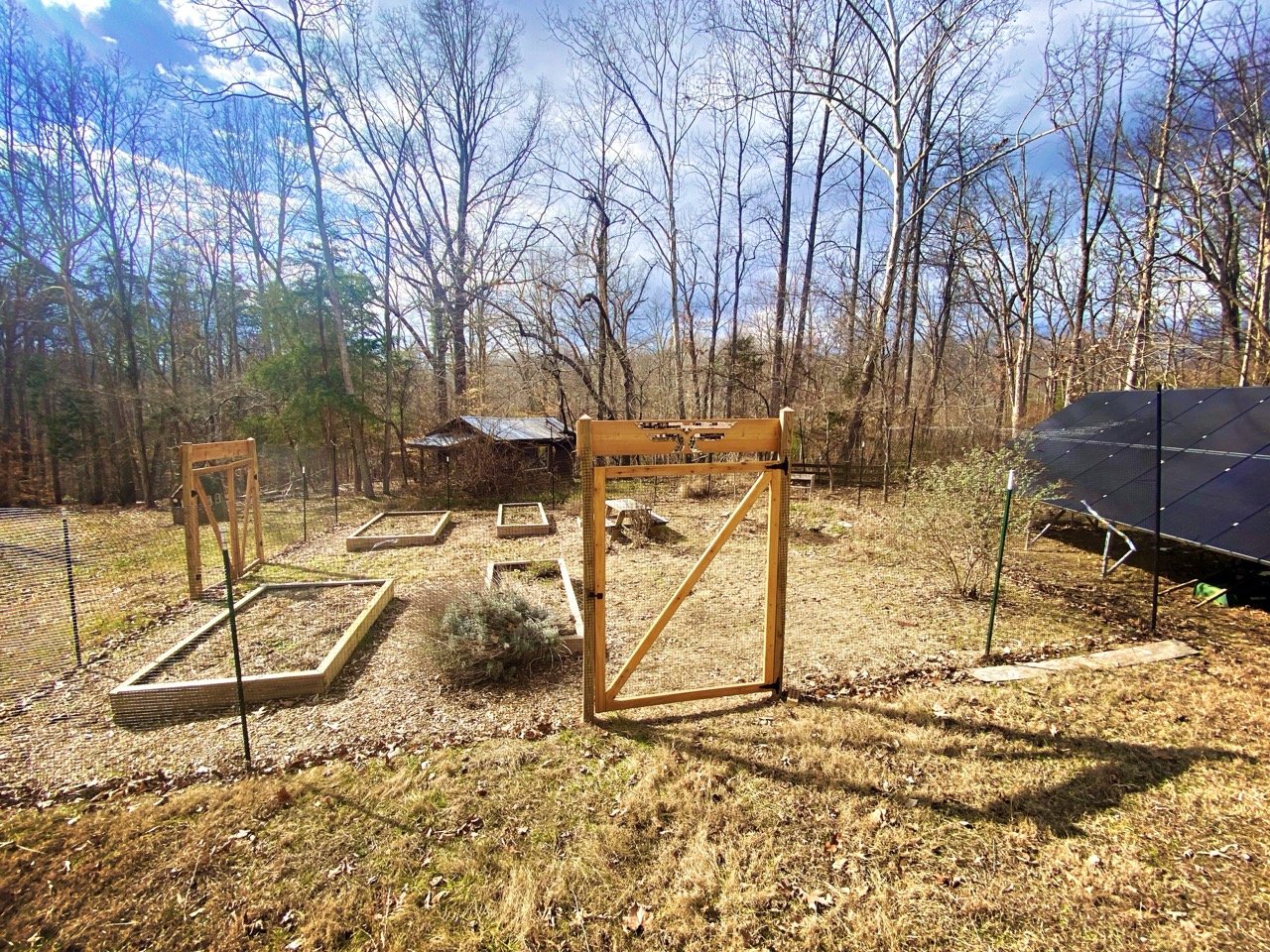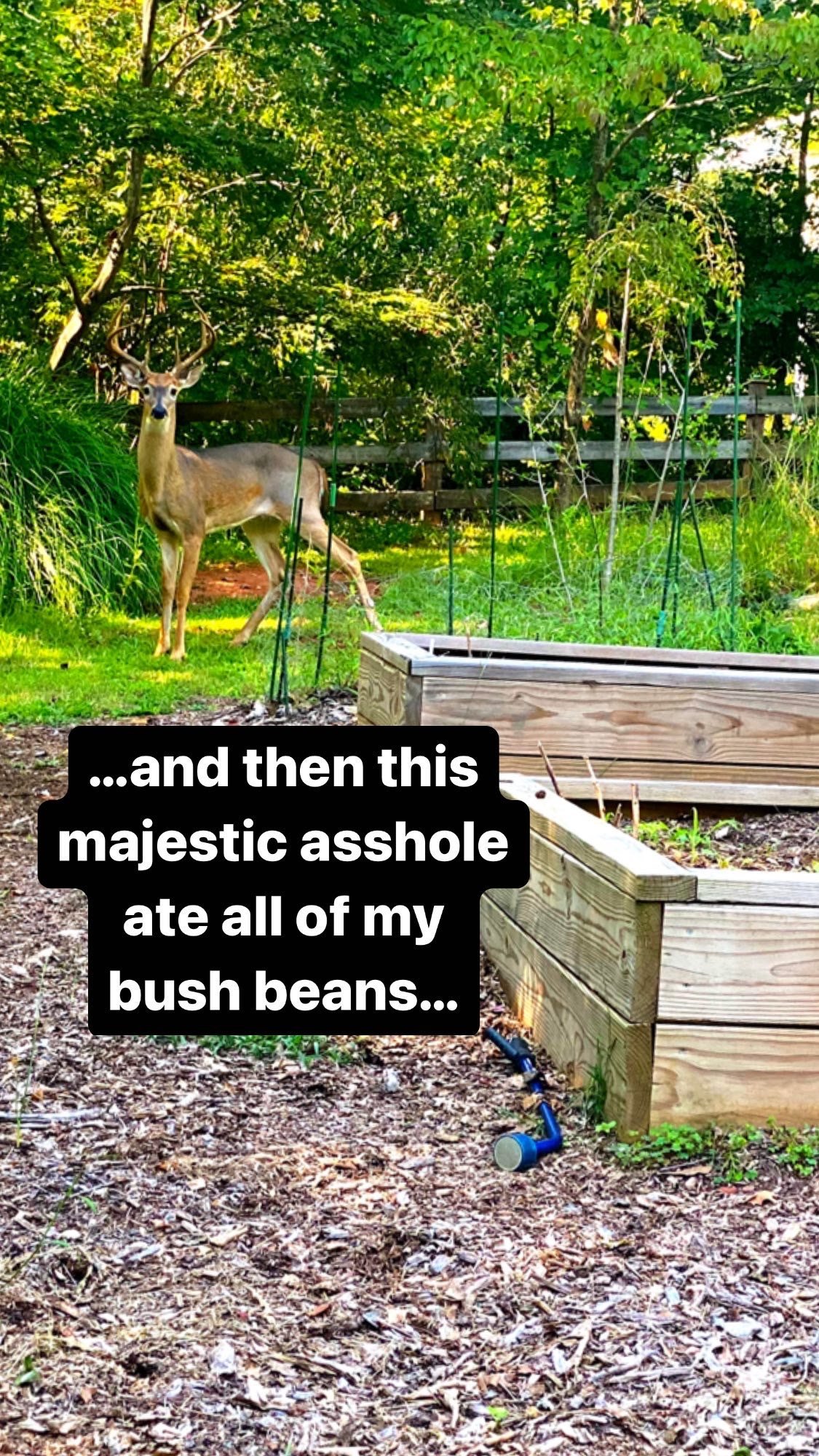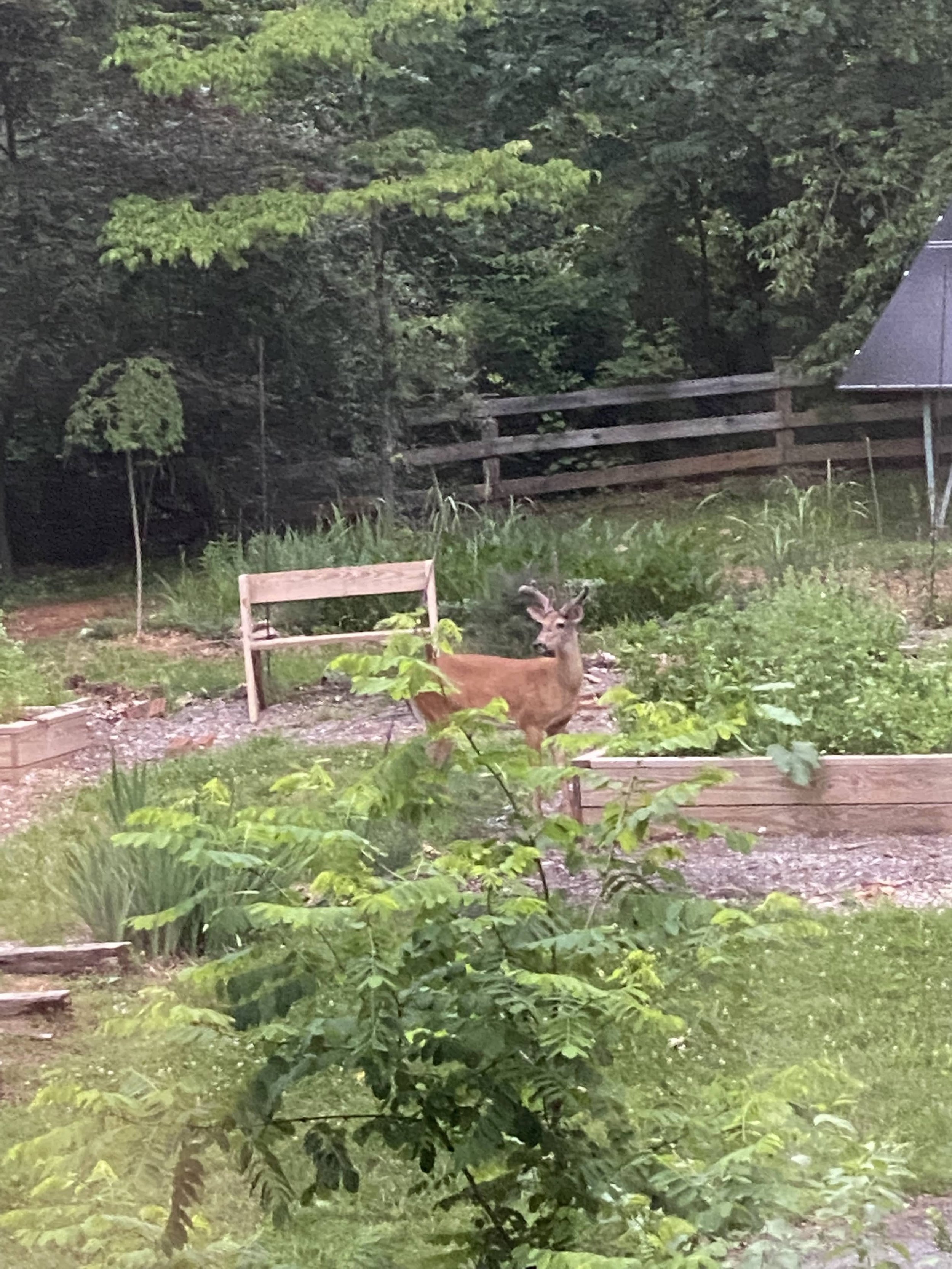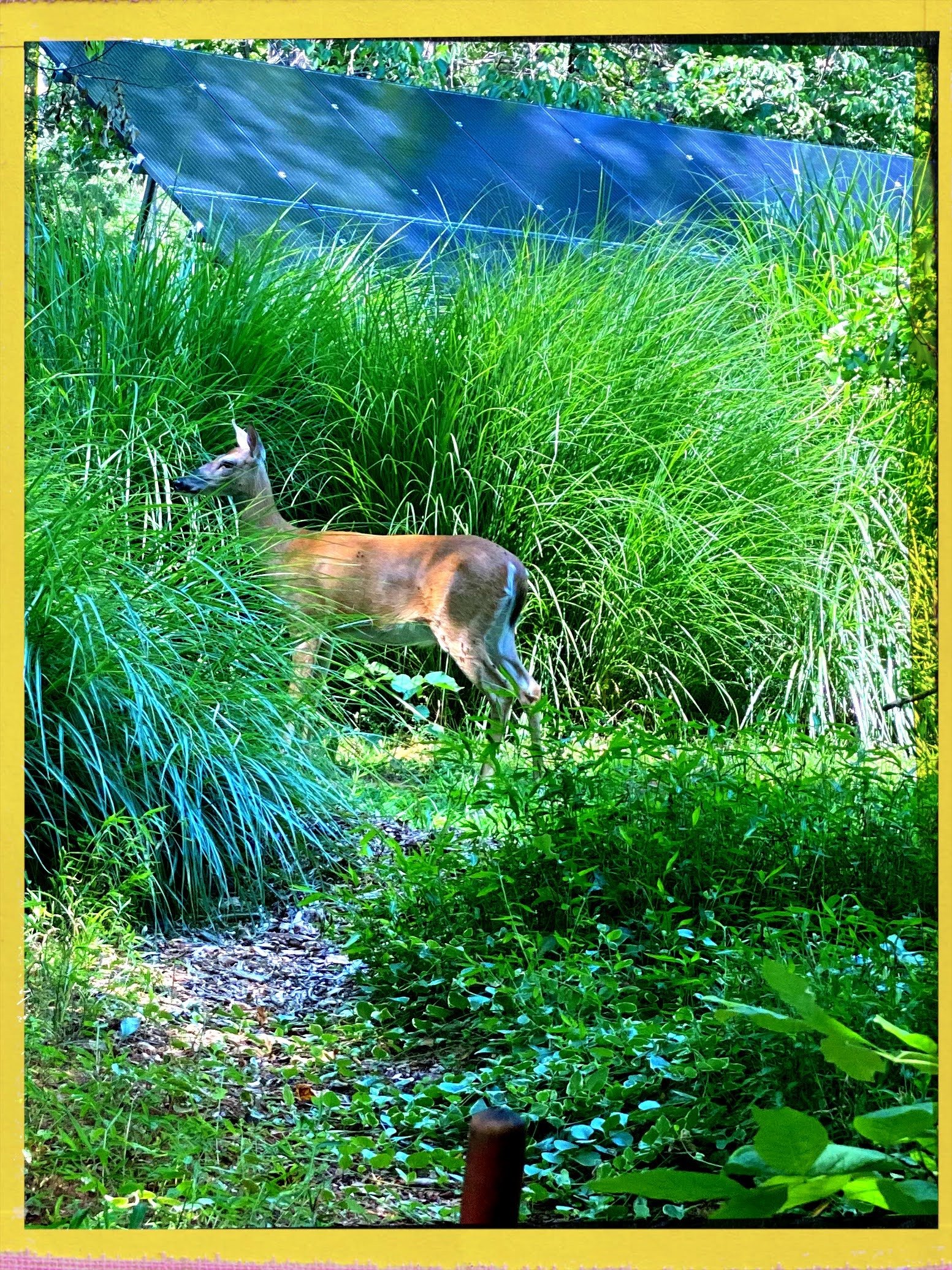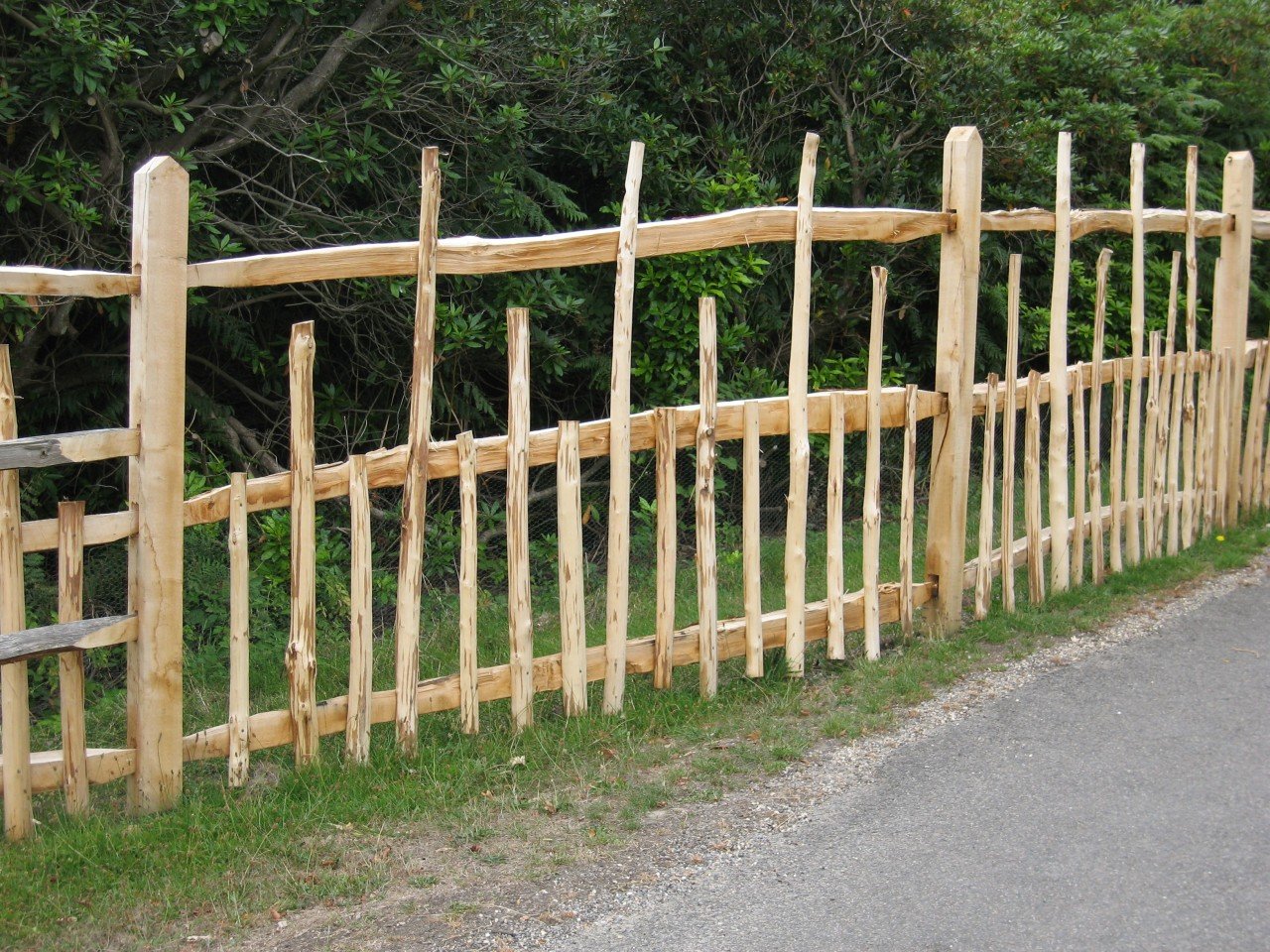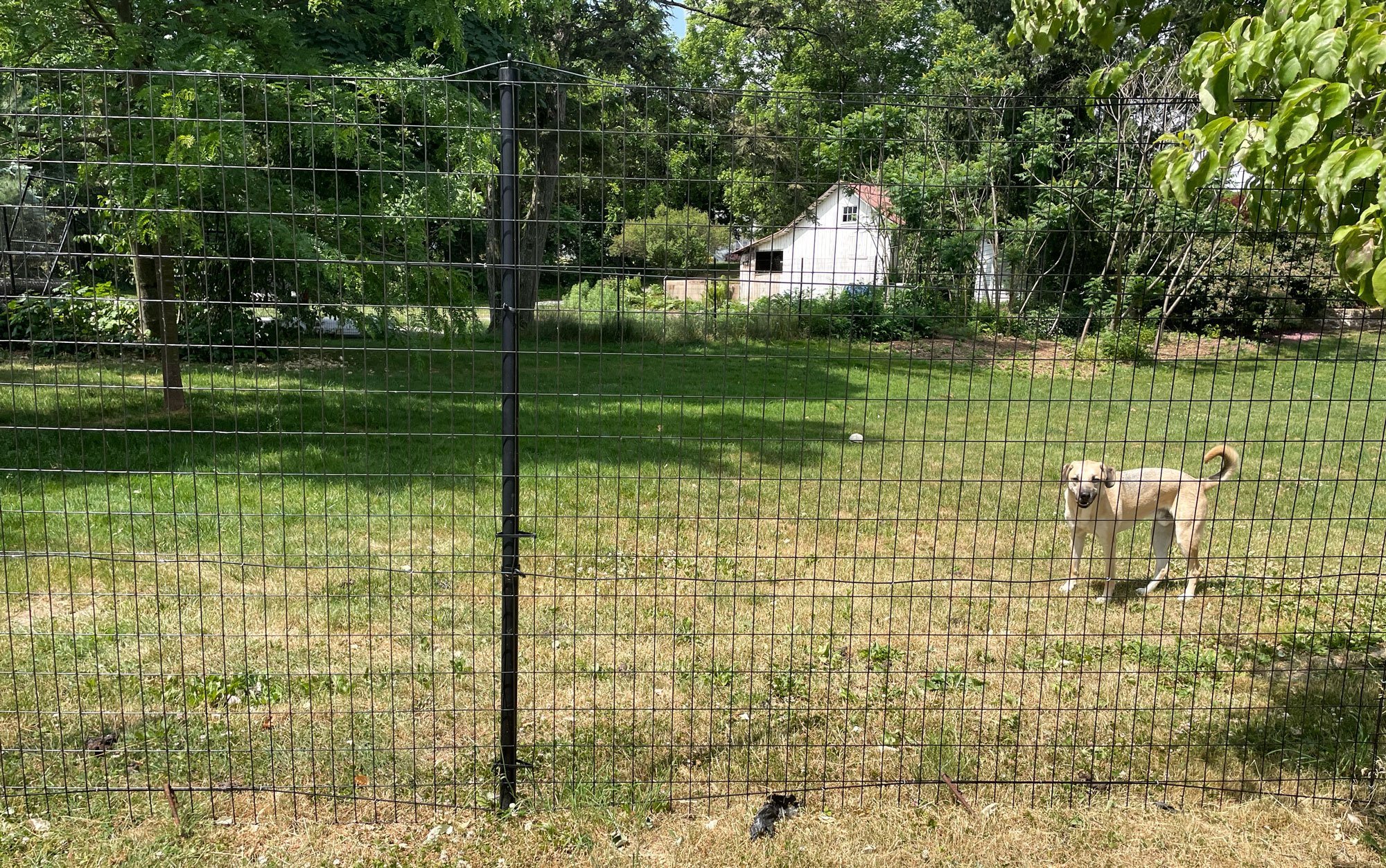How to Build a DIY Deer Fence for Gardens #1: Planning
Introduction
Here in Part 1, we cover the different types of garden deer fences you can choose to keep deer away from your vegetable garden — like wood, welded wire, electric fences, and natural/chemical repellents — along with details on the planning phase — including how to determine your fence line and choose materials.
In Part 2, we'll provide our full recipe for how to build a DIY deer fence — specifically the heavy duty, half-invisible/half-very-conspicuous wire mesh fence we made for Thunderbird Disco — with step-by-step instructions you can follow.
First, a little background.
Kate loves deer because they're elegant forest spirits or whatever, but they're also dumb and super destructive to things like vegetable gardens and really all plants and cars and life in general.
Their athletic prowess gives them the ability to jump over regular fences up to about 6 or 7 feet high. But with the installation of a tall, heavy duty, and reliable deer fence, you can create a barrier that will effectively keep these beautiful jerks at bay.
At first, we got some insanely high professional estimates to build our fence. While they would've completed the job in a weekend (it took us closer to two years; it was tough to carve out the time), we built our garden fence ourselves for a fraction of the price, using the materials we wanted, and today, the finished project is extremely satisfying to look at.
This post may contain an affiliate code or link that is no additional cost to you, and I may earn a small commission when a purchase is made.
our First Deer Fence
When we first put in our vegetable garden in Spring 2020, we opted for an admittedly lo-fi, first-generation fence using 12 x 10' rebar for the posts and 7' deer netting. The gates were just more deer netting affixed to some 1 x 2 pressure-treated wood boards, with vinyl-coated plant hooks screwed in to latch it to the rebar when I'd go in and out. The whole thing cost us about $202.
This fence held up decently for about 2 years. Varmints could easily chew through the netting, so we had to maintain and patch it often, and deer tried to jump it once or twice, which took some more major repairs. But it was generally fine for a while.
The End of Our First Garden Fence
Back in January 2022, Virginia got hit by Winter Storm Izzy — a foot of wet snow that knocked out our power, took down dozens of trees and limbs, and completely destroyed the original deer fence for our garden. The wet snow clung to the netting, and its weight ultimately bent all of the rebar down parallel to the ground. RIP.
The hardest part of this entire DIY experience was removing this mangled rebar from the ground. I'd pounded each bar into the ground about two feet, and it was very difficult trying to pull these bent rusty poles out of the ground by hand. I searched YouTube and found this guy who recommended using locking pliers to get a better grip on the rebar, which ended up being crucial. But even so, it required a full body workout to pull a dozen of these bastards out of the earth. Would not recommend.
Cost of Professional Fence Installation
With the old fence gone, we decided to re-imagine the perimeter of our garden, expanding it to include our small pond and basically enclose about 2000 square feet of space for possible plantings and other deer-vulnerable projects.
The perimater was roughly 40' x 47' so were looking for about 175 feet worth of fencing, plus two gates. We initially got some professional quotes for our deer fence:
For an 8' high fence with two gates the estimate was $8560
For a 5' fence with a wooden top board around the entire perimeter, it was $6708
Another guy just eyeballed it and quoted me $10K, explaining that the price of materials had gone up considerably
All in all, it felt silly to spend $7-10K on a family vegetable garden that's not going to provide much financial ROI, and with a little elbow grease and YouTubing we felt like we could probably Do It Ourselves, even though we knew it'd take us a lot longer this way.
Jump to the step-by-step instructions, or read on for more detail on the planning.
Our first fence is buried somewhere under this snow…
Understanding Deer Damage
In case you're not familiar, deer will eat just about any kind of foliage. They may not like everything and go back for second or third helpings, but they're willing to at least try anything, including crops, flowers, fig trees, tomatoes, shrubs, invasive species, whatever. They're also more prevalent these days, given the relative absence of predators like bears, mountain lions, and coyotes. So they make themselves comfortable in yards and gardens.
Still, with our old fence out of commish, we tried planting some veggies, just to see if some memory of our old fence had made its way through the neighborhood deer grapevine and they'd all discussed, "Nah, don't bother, it's not even worth it to mess with Thunderbird Disco, they have rebar and deer netting, best to stay away." No such luck. As soon as we had some bush beans sprouting, they came through and decimated the entire crop.
Over the next year, we opted to plant cover crop in our raised beds instead, which has several benefits I'll cover in a separate article — including weed suppression, adding natural fertilizer back into the garden soil, and generally improving the planting ecosystem for the following season.
Types of Deer Fence
When considering a deer fence for gardens, it's essential to understand just how high these mighty gluttons can jump. On average, a deer can clear heights of up to 7 feet when leaping, making it crucial to have a fence that is at least this tall to effectively protect your garden.
In terms of possible barriers, aside from the deer netting we used, there are other options to consider including:
Wire mesh fences - a tightly woven welded wire with sturdy construction and various weather-resistant options
Electric fences - a mild electric shock to deters deer and other animals from entering, I'm told it's easy to install and super effective
Wood fences - pretty self-explanatory
Wood-and-wire fences - uses wood for much of the framing plus wire panels
Natural deterrents - thorny bushes like barberry or holly create a physical barrier that deer are reluctant to navigate through, and plants with strong scents, like lavender or rosemary, can mask the scent of your garden's foliage.
Chemical deterrents - deer repellent sprays like this emit an odor or taste that is unpleasant to deer (and humans!).
Pre-fab deer-proof garden kits - if you’re just looking to keep a small kitchen garden protected from deer, one of these ready-made kits from EarthEasy might do the trick.
Choosing the Right Deer Fence - The Factors We Considered
Garden size and layout
Again, we were looking to expand our garden to about 2000 square feet, which required about 175 linear feet (call it 200) of fence line and fencing material, so that's the number we had in mind when pricing everything out.
Visual and olfactory aesthetics
Our garden is one of the first things visitors see when they come up the driveway, and we wanted a fence that was nearly invisible, something that would not be an eyesore or look like a giant cage. We also didn't want to plant a bunch of undesirable thorny bushes or regularly spread chemical deterrents (we tried this once; it smelled like a bag of mashed-up assholes that we'd willingly spread around our yard. If you get this stuff on your hands it takes some considerable scrubbing to get rid of the stench).
Budget constraints
We were definitely looking to spend much less than the $7-10K professional estimates we received, but we knew we needed to upgrade beyond our super basic v1 fence, which only cost $200, so we were aiming for something in the $1-2K range.
Desired level of protection
We didn't want to go down the same route of creating a fence that would only last a year, or totally roll the dice on natural or chemical deterrents.
If we were going to go with fencing, we wanted at least 7' of height, and we were nervous about electric fencing since we have young kids and even younger neighbor-friend-kids or pets roaming around, and we were worried about hurting someone.
We did seriously consider, electric fencing like this PoultryNet kit from Premier 1 Supplies, which came highly recommended, but two 60” x 100' rolls would've put us around a starting price of $1236, and I was worried that only 5' of height wouldn’t be enough for these high jumpers and we'd be back where we started.
Our Choice - Deerbusters Welded Wire Fencing
Ultimately, we opted for the wire mesh option, which seemed like the best mix of cost, durability, aesthetics, etc. Specifically, we bought two rolls of Deerbusters 8' x 100' Welded Wire 19 gauge, galvanized steel core, adding the optional black PVC-Coating for durability and to help it blend into its surroundings. We went with a 1" x 1" mesh to help keep out smaller critters like rabbits and other varmints. Two rolls cost us $750.
Deerbusters has a ton of great products for this exact purpose, and having done a bunch of research it felt like they were the best option all around, for variety, durability, ease of installation, and price.
For the posts, we went with a mixture of black galvanized steel chain link fence rails (not the posts) which would also blend into their surroundings (the ones I used are currently unavailable and were much cheaper, but something like this). And then pressure-treated 4 x 4s for the gate posts. We could've, and maybe should've, gone with a more complete Deerbusters kit like this that included all the posts, ground sleeves, corner pieces, gates, etc., for about $3000 — and this might've precluded the need for as much concrete — but we thought we could do it a bit cheaper and cooler.
For instance, we wanted to leave enough budget to splurge a bit on the aesthetics of the gates, handcrafting them out of cedar with a custom top board emblazoned with a disco mirror Thunderbird Disco logo (more on that later), because that's how we like to party.
Now that you're all planned out and ready...
